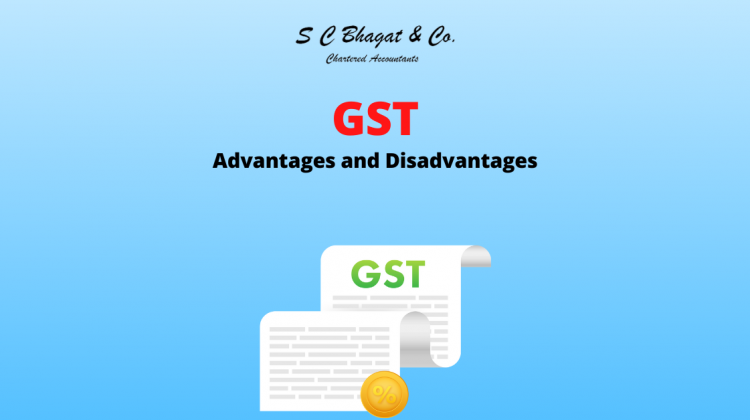The goods and services tax (GST) is a form of indirect federal sales tax that is imposed on a select range of goods and services in accordance with the GST slab that is annually approved by the budget. The vendor will add the GST to the price of the item or service after the GST slab when a product is purchased or a service is hired. To combat tax evasion, the GST replaced a number of levies on goods and services, including the sales tax and VAT.
One of the largest improvements in India was the introduction of a dual GST system in 2017. Eliminating tax on tax, or dual taxation, which propagates from the manufacturing level to the consumer level, was the goal of integrating the GST.
What are the GST advantages and disadvantages?
- A rich and complete system of income tax is the basis of the GST rule in India. Everything is available online, all taxpayer services such as registrations, returns, payments, etc., to make compliance effortless and transparent.
- GST assures neutrality to the indirect tax rates and structures across the country. That boosts the certainty and comfort of conducting business.
- A method of smooth tax credits throughout the chain of value-adding, and across borders of states to ensure minimal cascading of taxes.
- The decline in marketing costs of doing business certainly guides to improving competitiveness for the business and enterprise.
- The encompassing of major State, and Central taxes in GST, entire and exhaustive set-off of input goods and services reduces the expense of locally manufactured goods and services.
- Supported by a rich end-to-end income tax system, GST is simpler to understand than all other indirect taxes imposed by the Centre and State.
- From one phase to another in the chain of value-adding, there is an in-built tool in the structure of GST is incentivize tax compliance by merchants.
- GST reduces the cost of collecting the Government’s tax revenues and will, therefore, guide higher revenue efficiency.
- Under GST, there is only one tax from the manufacturing to the consumption, directing the clarity of taxes paid to the final buyer.
- GST is a tax only on value addition at each phase. Because of efficiency gains and the prevention of leakages, the overall tax burden on most commodities will decrease.
10 disadvantages of GST
- The implementation of GST has increased the cost due to stress on software purchases.
- Several Indian traders are not tech-savvy enough, which creates a gap in understanding the taxation and filing system.
- For the management and administration of the compliance process, the requirement and cost of employment have increased.
- Businesses require to prepare their employees for GST compliance and train them to keep a record at every phase, further increasing their overhead expenditure.
- It has increased the tax liability of small and medium-sized businesses.
- It has increased the burden of tax compliance solely on the business.
- Every business has to register with the GST portal. Otherwise, it attracts penalties.
- The traders should be ready to face any kind of technical glitch and should secure a backup of all the data.
- It can be difficult for businesses to adjust to the GST regime along with the other tax system to be maintained parallelly.
- Any little mistake in filing the compliance can lead to not availability of the tax credits.

